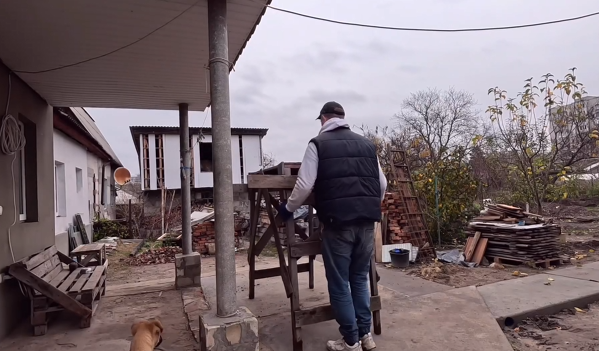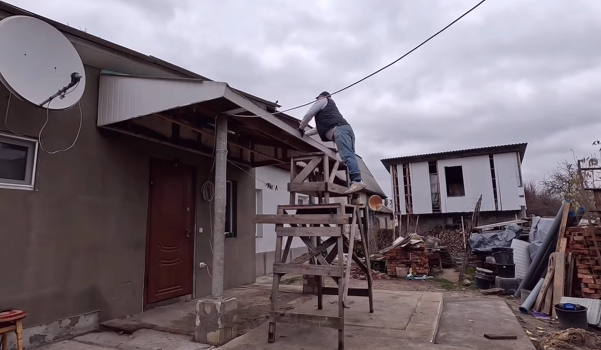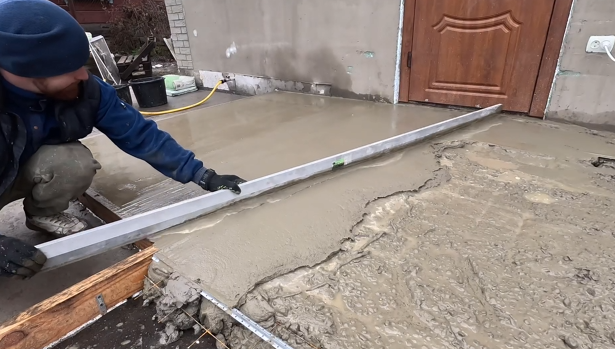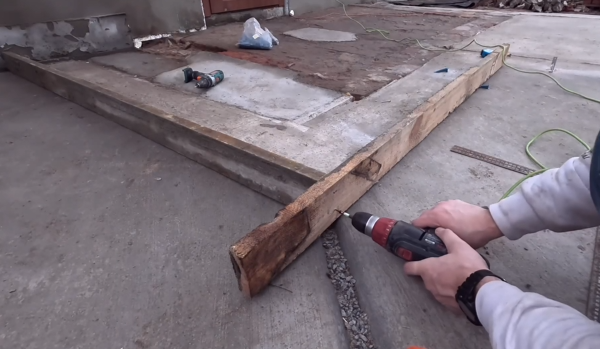
There’s a certain silence that comes with early morning on a project site, especially when it’s your own home. The sun hadn’t yet risen above the trees at the back of the yard, and the dew still clung to the grass. It was the kind of morning that smelled like change — earthy, cool, and full of potential.
We were finally doing it — transforming the back terrace into something usable, modern, and ours. For years, the old structure stood like a ghost of the past: a warped wooden deck with uneven tiles and a rusted metal canopy above, held together more by habit than hardware. Its days were numbered, and we were ready to start fre

The first task was clear: dismantling the old canopy.
The canopy was a relic from the 1970s — corrugated fiberglass panels supported by a frame of metal poles, most of which had long since surrendered to rust. Each gust of wind rattled the structure like dry bones. We didn’t need an engineer to tell us it was unsafe.
Armed with gloves, goggles, and a handful of tools — mostly a power drill, crowbars, and a ladder — we began the process. It started slowly. Screws stripped, bolts refused to budge, and the panels were more brittle than expected. But the satisfying creak of the first panel being removed gave us a rush of motivation.
One by one, the panels came down. Some shattered. Some resisted. But with each one gone, we uncovered more of the blue sky — the kind of open space that hinted at what the terrace could become. When the last panel was lifted off and set aside, we stepped back and looked at the bare bones of the frame.

Next came the metal supports.
These were trickier. Rust had fused some of the joints. We took turns holding the base while the other cut through the metal with a reciprocating saw. Sparks flew, laughter followed, and slowly, we brought the canopy down to earth. We piled the scrap metal neatly to one side, destined for the recycling center.
For the first time in years, the terrace felt open.
But it was only the beginning. The next stage was far messier: pouring a new concrete slab.
We had debated this part. Should we hire a crew or do it ourselves? In the end, our DIY spirit won out. A weekend, a few friends, and some determination — that was all we needed. Or so we thought.
Preparation began with demolition. The old surface was uneven and unstable. Some parts were tiles, others cracked concrete, and a few were just dirt where the original foundation had eroded. We rented a jackhammer and began breaking it all apart.
It was grueling work. The jackhammer rattled our bones, and dust hung in the air like a fog. Beneath the top layer, we found layers of rock, broken bricks, and even a few rusted nails. We unearthed things that hadn’t seen daylight in decades. But slowly, the space cleared.

Next, we built the formwork — wooden frames that would shape the concrete. Measuring, leveling, adjusting — it was precise work, more math than muscle. The key was to ensure a slight slope, so water would drain properly away from the house. It took a few tries and a lot of string lines and levels, but eventually, the form was solid and secure.
With the formwork ready, we laid down a layer of crushed gravel for drainage, tamping it flat and level. Over that went the steel mesh — rebar and wire grid — to reinforce the slab. Every step felt like a small victory, bringing us closer to something solid and permanent.
The big day — pour day — arrived with anticipation.
We had ordered the concrete from a local supplier. It would arrive by truck at 10 a.m., and we had only a few hours to get everything in place. The team — four of us, plus my father, who had done this kind of work in his youth — stood ready with wheelbarrows, rakes, and floats.

When the truck backed into the driveway and the chute swung into position, there was a hush — a mixture of excitement and nervous energy.
The first rush of concrete poured into the frame like thick lava, gray and grainy. We scrambled into action. One man at the chute, directing flow. Two of us moving the mix with rakes and shovels. One on the screed board, leveling the surface. It was fast, sweaty, and rhythmic work.
There was no time to stop. Once the pour began, it had to be completed in one go, or the slab would cure unevenly. We worked in near silence, save for the scrape of metal, the squelch of concrete, and the occasional “Watch your step!” or “Need more on the left!”
The sun rose higher. Sweat dripped into eyes. Concrete splattered boots and shirts. But inch by inch, foot by foot, we filled the frame. Once the last of it was poured, we moved to the next stage — smoothing the surface.

Using floats and trowels, we went over every inch. First to level. Then to smooth. Then again, once the water rose to the surface, to polish it down. It was satisfying work — watching the wet, grainy mix transform into a smooth, silken surface. We etched light grooves into the slab for traction and marked out expansion joints.
As the slab began to set, we sat back on the grass, exhausted but proud. Our hands were sore, our backs ached, and our clothes were a mess. But in front of us was a clean, new surface — level, strong, and full of promise.
We would need to let it cure over the next few days, keeping it moist and covered so it wouldn’t crack. But for now, the hardest part was done.
Looking at the space, it already felt like something new. No longer a crumbling patchwork of decay and rust, but a blank canvas. A foundation.
In the weeks to come, we’d build on this: a new pergola, furniture, maybe even a fire pit. But all of that would come later.
Today was about beginnings. About breaking down the old, and laying the ground for something better.
And as the sun dipped behind the trees once again, casting long golden shadows across our brand-new slab, I knew one thing for certain:
This terrace was going to be beautiful.


